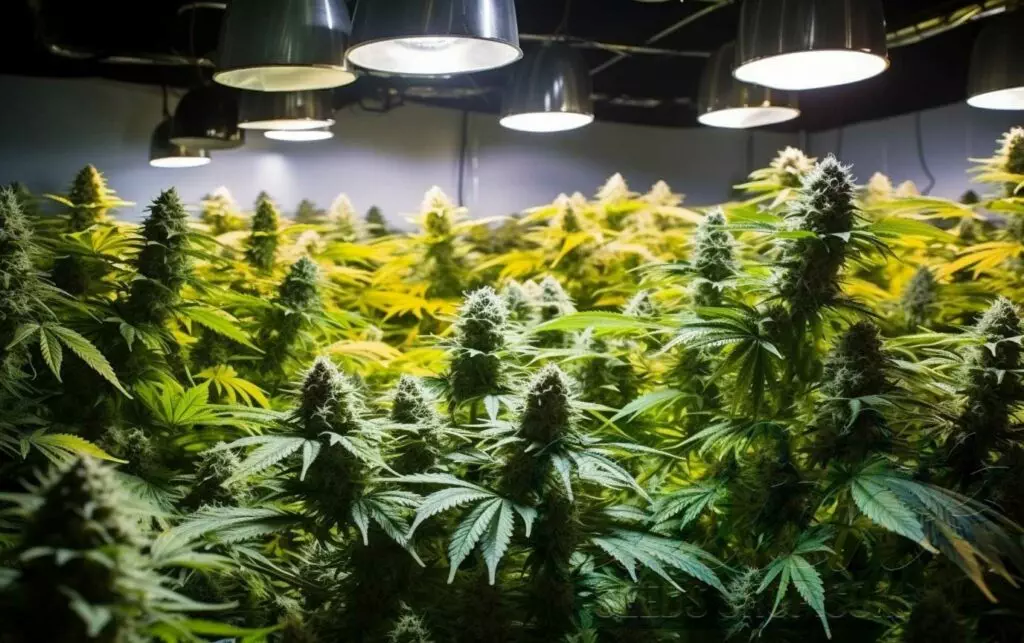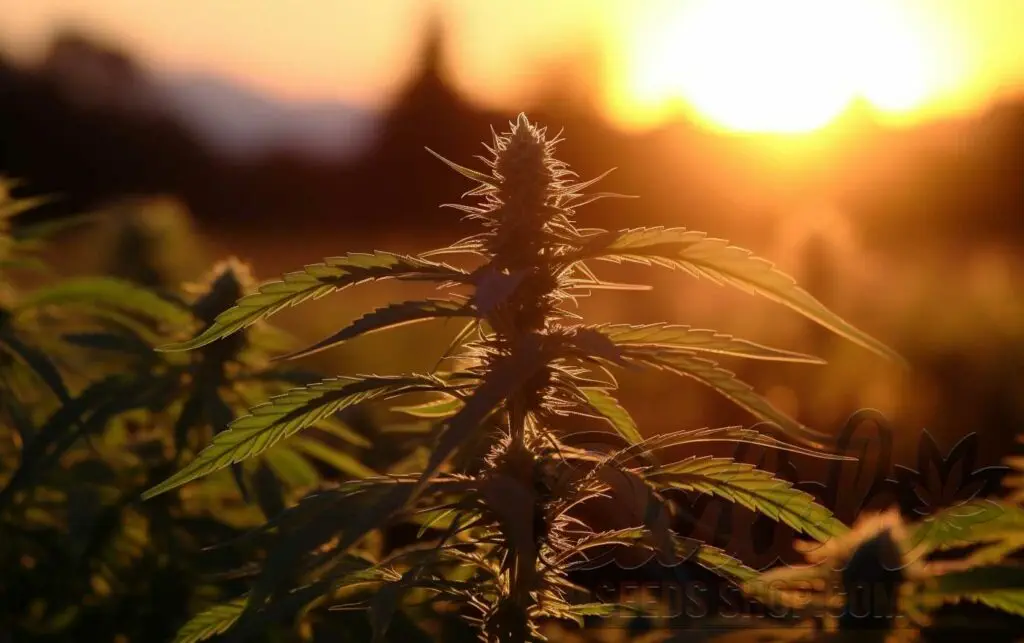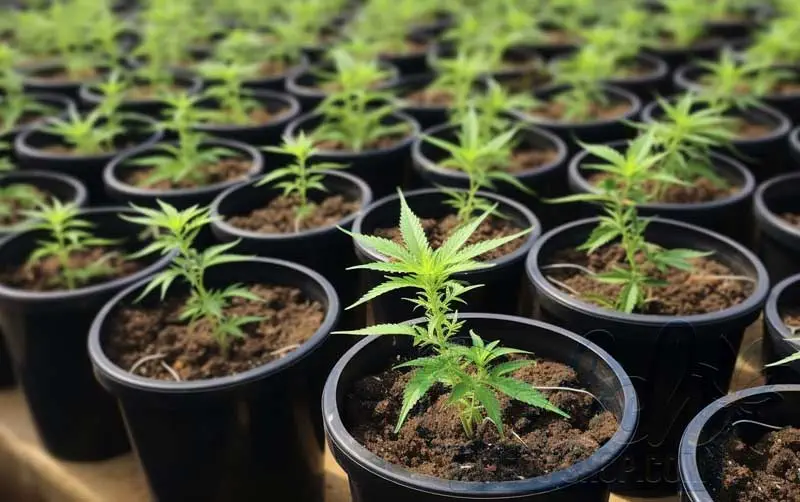How to Grow Purple Urkle Strain
So, you’re into the magical world of cannabis, and Purple Urkle has caught your eye. Rightly so! This strain is an 80% Indica-dominant hybrid that delivers a one-of-a-kind high, complete with euphoria and relaxation.

Get To Know Purple Urkle Strain
Meet the child of the famous Mendocino Purps lineage.
Purple Urkle is the superstar strain for those seeking a balanced but potent experience.
Boasting a THC level of 18%-22%, this strain isn’t for the faint-hearted.
CBD content is lower than 0.2%, so expect a less therapeutic and more leisurely experience.
Want to impress your friends?
Throw out some mouth-watering flavors like fruity, earthy, skunk, and sweet.
This strain has walked the red carpet in cannabis cups but still manages to stay humble on your average Joe’s shelf.
Reviews often highlight its ability to make you feel euphoric, relaxed, and sleepy.
Flip through videos and pictures; you’ll find it’s a top pick for both growers and smokers.
Tips and Tricks for Growing Purple Urkle Successfully
Planting Purple Urkle seeds is like nurturing a rockstar – it demands your attention but pays off big.
With a moderate difficulty level and a medium height, this plant fits well in various setups.
Flowering time? Mark 55-60 days on your calendar.
Here’s a quick list to make sure you’re up and running:
- Choose Your Starting Point: Seeds or clones; both have their pros and cons.
- Climate Check: A mild climate is your best bet for outdoor growing.
- Gear Up: Select the right accessories for cultivation.
- Watch Your Yield: Indoor growers can expect 1.1 to 1.3 oz/ft², while outdoor farmers will see 26 to 35 oz per plant.
Purple Urkle Indoor Growing

The indoor cultivation of Purple Urkle is akin to setting the stage for a legendary rock show, with you as the master of ceremonies.
From climate control to lighting and growing mediums, every aspect must harmonize for that killer performance, culminating in premium-grade buds.
Benefits of Indoor Growing
Cultivating Purple Urkle indoors is like unlocking a treasure trove of advantages.
You call the shots in this controlled environment, letting you fine-tune every variable for an optimized growing experience.
The privacy factor alone is worth its weight in gold – you can play mad scientist without the prying eyes of nosy neighbors.
Additionally, indoor growing minimizes the risks of pests and diseases, because your plant is not exposed to the natural environment where these issues usually originate.
The yield is often superior in quality, allowing you to showcase the strain’s beautiful purple hues and intricate trichomes.
| Benefits | Why It Matters |
| Climate Control | Customize environmental factors for optimized growth. |
| Year-Round Growing | Seasons can’t dictate your grow cycles. |
| Privacy | Your business stays your business. |
| Pesticide-Free | Lower risk of contamination. |
| Superior Yield | Optimal quality and trichome density. |
Setting Up Your Indoor Grow Space
To kick off your indoor cultivation, the first thing you need is a dedicated grow space that could range from a closet to an entire room.
Your primary consideration should be ventilation and light – two critical factors that can make or break your grow.
For instance, a grow tent with reflective interior walls can dramatically boost your light efficiency.
Invest in a quality exhaust fan to ensure that fresh air circulates throughout your grow space, reducing the risk of mold and diseases.
- Location: Choose a secluded, accessible space.
- Size: Consider the number of plants and the room for equipment.
- Light Reflection: Use Mylar or white paint to boost light efficiency.
- Ventilation: Install an exhaust fan and multiple smaller fans.
- Electricity: Ensure accessibility to electrical outlets.
Climate Control

Climate control is the puppeteer behind the scenes, subtly manipulating the temperature, humidity, and light to create the perfect stage for Purple Urkle’s show-stopping performance.
Inadequate climate control can lead to stressed plants, which might hermaphrodite or develop issues like mold and pests.
Digital climate controllers are a godsend, allowing you to automate the temperature and humidity settings in your grow room.
Consider air-conditioners or heaters to maintain optimal temperature, which should range from 75-80°F during the vegetative stage and 65-75°F during flowering.
Humidity should start high (about 60-70%) during the vegetative stage, gradually dropping to around 40-50% as you near harvest.
Types of Lights
Choosing the right kind of light for your Purple Urkle is like picking the best spotlight for a superstar singer – it has to shine but not scorch.
HID (High-Intensity Discharge) lights like MH (Metal Halide) for the vegetative stage and HPS (High Pressure Sodium) for the flowering stage are time-tested champions.
However, LED lights are the new kids on the block, offering energy efficiency and a broad spectrum of light without emitting too much heat.
| Type of Light | Best For | Energy Efficiency |
| HID (MH & HPS) | Vegetative & Flowering | Moderate |
| LED | All stages | High |
| Fluorescent | Small-scale, Vegetative | Low |
Growing Mediums and Containers
Soil or hydroponics? Pots or fabric containers? The options can be overwhelming.
Soil is the tried-and-true traditional medium that’s forgiving to beginner’s errors.
On the flip side, hydroponic systems can be your gateway to high-tech farming, offering faster growth and potentially higher yields.
When it comes to containers, don’t overlook their impact on your grow.
Plastic pots may be the economical choice, but fabric containers offer superior aeration and drainage.
Whichever container you choose, make sure it has excellent drainage because root rot is a silent killer in cannabis cultivation.
Caring for Indoor-Grown Purple Urkle
Your journey with Purple Urkle will be a daily bonding ritual, especially in the early stages.
Monitor the climate settings, check the pH levels of your water, and inspect for any early signs of nutrient deficiencies, pests, or diseases.
Pruning and training techniques like topping and low-stress training can help your plants grow in a controlled manner, maximizing light exposure to all parts of the plant.
- Daily Monitoring: Check climate, water pH, and plant health.
- Nutrient Schedule: Follow a consistent nutrient regimen.
- Training Techniques: Use topping, LST, or ScrOG methods.
- Pest Prevention: Employ organic pesticides as a preventive measure.
Odor Control
Ah, the pungent aroma of Purple Urkle – while it may smell like paradise to you, it can become a public announcement of your cannabis cultivation to neighbors.
Therefore, odor control is not something you can afford to overlook.
Carbon filters are often the first line of defense, trapping odorous particles from the air.
An exhaust fan can expel the filtered air outside, or you could choose to invest in an ozone generator for a more thorough scrubbing of odors.
Additionally, strategic placement of air-purifying plants and odor-neutralizing gels can complement these systems to ensure your grow room smells like any other room in the house.
Purple Urkle Outdoor Growing

Ah, the great outdoors – a stage where Purple Urkle can truly bask in its natural glory.
With the sun as its spotlight and Mother Earth as its stage, outdoor growing lets this strain’s true colors shine, from vibrant green foliage to those iconic purple buds.
Benefits of Outdoor Growing
When you grow Purple Urkle outdoors, you’re basically giving it a backstage pass to nature’s bounty.
Sunlight acts as the ultimate light source, impossible to replicate indoors.
Plus, you’ve got room to spread out and let those plants reach their full potential.
Lower operation costs are a no-brainer here; no need for artificial lights, exhaust fans, or climate control systems.
And let’s not forget the environmental impact – or lack thereof.
With outdoor growing, your carbon footprint shrinks down to its bare minimum.
| Benefits | Why It Matters |
| Natural Light | Sunlight offers a full spectrum of rays. |
| Lower Costs | No need for indoor equipment. |
| Space | Plants can grow to their maximum size. |
| Low Carbon Footprint | Environmentally friendly. |
Best Time to Plant Purple Urkle Outdoors
Timing is everything, especially when it comes to planting Purple Urkle outdoors.
The best period for planting is late spring to early summer when the risks of frost have vanished.
Purple Urkle loves a good, long growing season to reach its full yield and potency potential.
To maximize results, align your grow schedule with the lunar calendar, planting on the waxing moon to capitalize on its growth-boosting energy.
- Late Spring: After the last frost.
- Early Summer: Before peak heat sets in.
- Lunar Calendar: Plant during the waxing moon.
- Local Climate: Adapt schedule based on local weather patterns.
Setting Up Outdoor Grow Spaces
If you’re committing to an outdoor grow op, the space you choose can make or break the final act.
It has to be sunny but not scorching, remote yet accessible.
You’ll want a spot that receives at least eight hours of direct sunlight per day.
Factor in wind protection and accessibility to water.
A good fence can not only ward off critters but also add a layer of privacy and security to your garden.
- Sunlight: Minimum 8 hours of direct sunlight.
- Wind Protection: Natural barriers or installed windbreaks.
- Water Source: Easy access for regular watering.
- Fencing: For privacy and critter control.
- Accessibility: For daily care and inspection.
Selecting and Preparing Soil

The soil is the unsung hero of any cannabis grow, and when it comes to Purple Urkle, you want a rich loam that’s loaded with organic matter.
Work in some well-rotted manure, compost, and a dash of sand to create the ultimate backstage haven for your roots.
Don’t skip on pH testing; aim for a slightly acidic to neutral range of 6.0 to 7.0.
It’s not just about the type of soil but also its preparation.
Tilling the soil allows for better aeration and water drainage, and incorporating organic nutrients sets the stage for robust growth.
Nutrients and Fertilizers
When it comes to feeding Purple Urkle, think of it as creating the perfect setlist; each nutrient plays a role in the plant’s performance.
Nitrogen, phosphorus, and potassium (N-P-K) are the headliners here.
But don’t forget the secondary nutrients like calcium, magnesium, and sulfur, which are akin to the supporting acts that complete the show.
| Nutrient | Role in Plant Growth | Source |
| Nitrogen | Vegetative growth | Blood meal, fish emulsion |
| Phosphorus | Flower development | Bone meal, rock phosphate |
| Potassium | Overall health | Wood ash, kelp meal |
How to Maximize Purple Urkle Yield
So you want to be the rockstar grower who gets the most out of every Purple Urkle plant?
It starts with genetics – always go for the highest quality seeds or clones.
Training techniques like topping and low-stress training can help the plants to grow in a more bushy fashion, maximizing the yield.
Don’t underestimate the role of pest and disease management.
A single outbreak can spell disaster, potentially crippling your yield.
Regular monitoring is a must, paired with preventive measures like neem oil applications.
- Quality Genetics: Invest in top-notch seeds or clones.
- Training Techniques: Topping, LST, and even ScrOG for the ambitious.
- Pest Management: Regular inspections and preventive treatments.
- Harvest Timing: Chop those buds when trichomes are milky for peak potency.
Growing Purple Urkle is like producing a platinum record; it’s got its challenges but, boy, the rewards are sweet.
From its vibrant colors to its alluring scent and potent effects, this strain is a true superstar.
The uniqueness lies in its ability to flourish both indoors and outdoors, each with its own set of perks.
But, to truly let it shine, mastering its needs – be it the right soil, the optimal light, or a climate that it grooves in – is crucial.
Get it right, and you don’t just grow cannabis; you cultivate a masterpiece.
That’s the Purple Urkle promise – complexity and rewards in one aromatic package.
FAQ
How tall does Purple Urkle grow?
Expect a medium-height plant, usually around 3-5 feet.
Is Purple Urkle susceptible to mold or pests?
This strain has a moderate resistance to mold and pests.
How long is the flowering period for Purple Urkle?
The flowering period usually lasts around 8 to 9 weeks.
What is the THC content in Purple Urkle?
Purple Urkle is potent but not off-the-charts, typically boasting a THC content of around 18-21%.
Do you need to prune Purple Urkle?
Pruning can help this strain maximize yield and potency.
About the Author
Share the Love:
